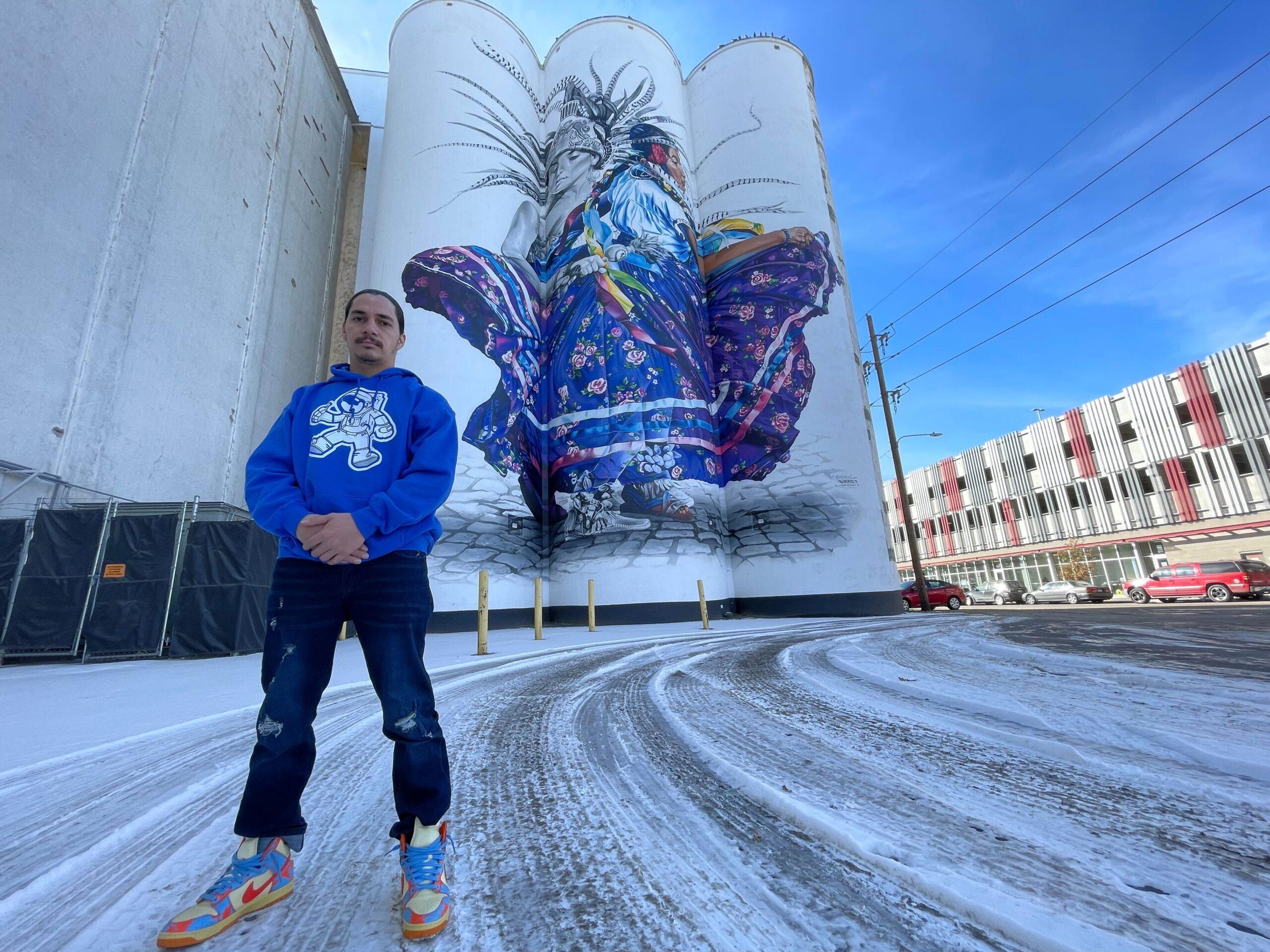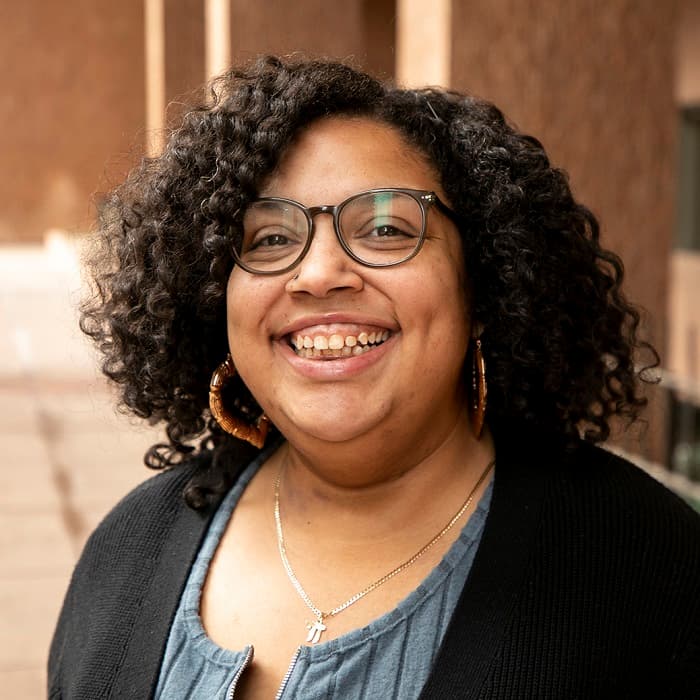If you're standing on the corner of Wynkoop and 38th Street, near Butcher Block Café, in the RiNo area of Five Points, look up.
Painted along the side of the cylindrical silos of the Ardent Mills Flour Refinery lies a massive 85 foot mural titled "Mitotli" spray-painted by local artist, Bimmer Torres.
Torres is a muralist and sculptor who's been leaving his mark around Denver along the walls of apartment buildings, schools and now, the flour mill, for the past 16 years.
Torres grew up on the Northside and was always interested in art and expressing his creativity. During his teenage years, that expression came through in the form of graffiti art. But without the permission of property owners, that artwork had legal repercussions.
"Coming from a low-income neighborhood, there's not a lot of opportunities to be creative. I just wanted to paint a wall and express myself...overlooking all consequences and rules," Torres said. "[Graffiti] gave me the ability to make opportunities out of nothing... I was facing some bad consequences for my actions but I love art and I love murals, so I decided to start approaching businesses legitimately."

Through the mural club at West High School, created by Torres' friend Ratha Sok, Torres learned how to approach businesses and ultimately get paid for his artwork. He also learned about grant funding, including programs like Denver Public Art, which sets aside 1% of every municipal capital improvement project over $1 million for the creation of public art.
From there, Torres worked on getting contracts across the state. He works on about five large scale murals a year and smaller projects in between. Torres said on those smaller projects, he'll enlist the help of community members and students through workshop programs. One of those workshops was run through the Gilliam Youth Services Center, a juvenile detention center. Inside the facility, Torres and the young adults created several murals representing "repair, respect and reintegration."
He also recently completed a project with students from CEC Early College.

"It's another way where we can engage with the community," Torres said. "In Gilliam, it was mostly Black and Hispanic kids. We used some grant funding to give back and put these murals in direct connection with people like me and kids like me."
Another way Torres gives back to the community is through the art itself. Torres said he's inspired by other Chicano muralists and graffiti artists and that shows through his work, which typically depicts Brown faces.
Like the mural at Ardent Mills.
In Nahuatl, mitotli means "dance," and Torres said the dance is occurring between the past and the present. The dancer painted in black and white represents indigenous roots, specifically indigenous Central Americans prior to the Spanish conquest.
The colorful dancer represents the present-day mestizo women, who Torres said fought their way through the chaos of conquest and colonization.

It's a fitting image in an area that has been culturally rebranded and gentrified. For some, the first signs of gentrification include new apartment buildings in bland neutral colors, the arrival of bougie coffee shops and artwork. Art being the beautification aspect.
Artists in Denver's Westwood neighborhood have said the way they combat the stigma of art equating to gentrification is by employing locals that create culturally relevant art.
The way Torres fights back is by painting those same brown faces that may have faced displacement.
"I believe in representation," Torres said. "A lot of my murals depict brown people and brown faces and that's not often depicted in murals...To be able to create that and put it up at a grand scale and have a person of color going in and seeing themselves, it creates a sense of ownership and a sense of power. The ability to reflect on a piece and be able to see yourself and your family gives you that sense of pride... I always try to tie in the community in some way."
You can see some of those depictions in Westwood on the sides of Terraza del Sol and Avenida del Sol, two affordable housing complexes in the neighborhood.

Torres said, for now, he's focusing on his canvas work and sculptures. One sculpture project he's working on will take about three years and it's centered on community voices. He can't talk much about it but he can talk about Mitotli.
This week, he went back to the refinery to take some photos and bask in the large-scale piece.
"These walls have probably been white for their whole life. This changes the landscape and the perception of community," Torres said.
He reminisced about standing on the lift and leaning over to get into the crevices of the silos. He added that the opposing wall is blank and maybe Ardent Mills will let him paint the woman's partner on that side. Though again, he's not really emotionally ready to go that high again.

"There were definitely some scary parts," he laughed.
The surrounding area is filled with scaffolding and cranes mixed in with tiny houses. That particular portion has always been warehouses Torres said but the area is definitely changing. He noted that RiNo used to be the Eastside or the E. But while that name has changed some things still remain the same and if folks are looking for some representation, they only have to look up.
"I want to dedicate this mural to the Hispanic population, especially those in the Eastside, Globeville and Swansea. That mural is for you," Torres said.














